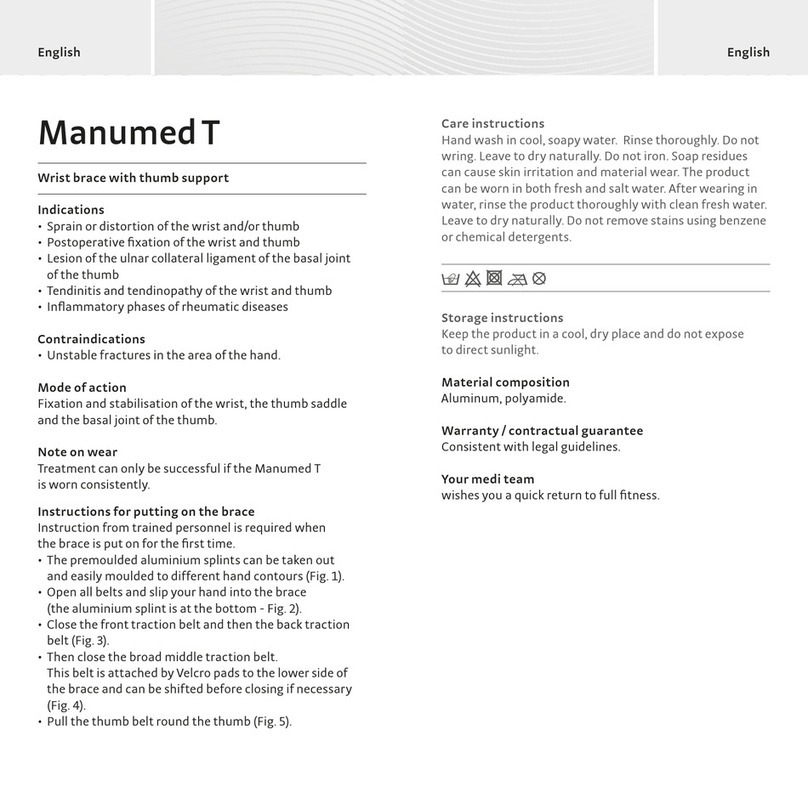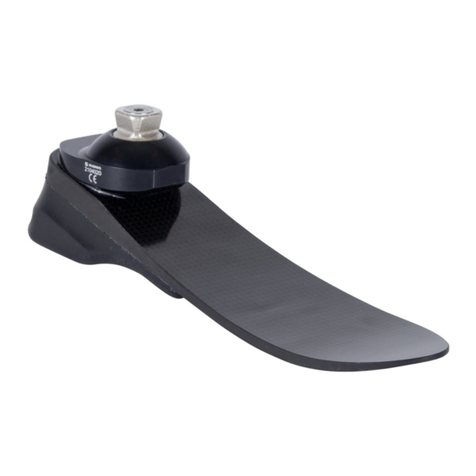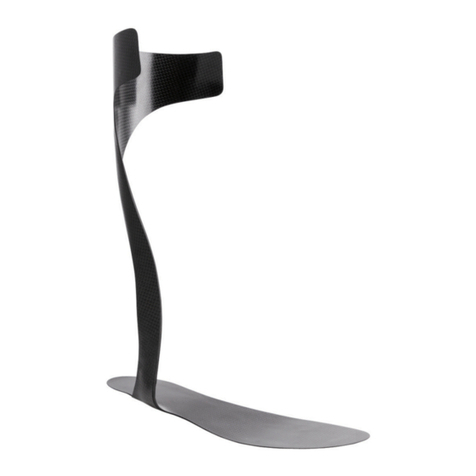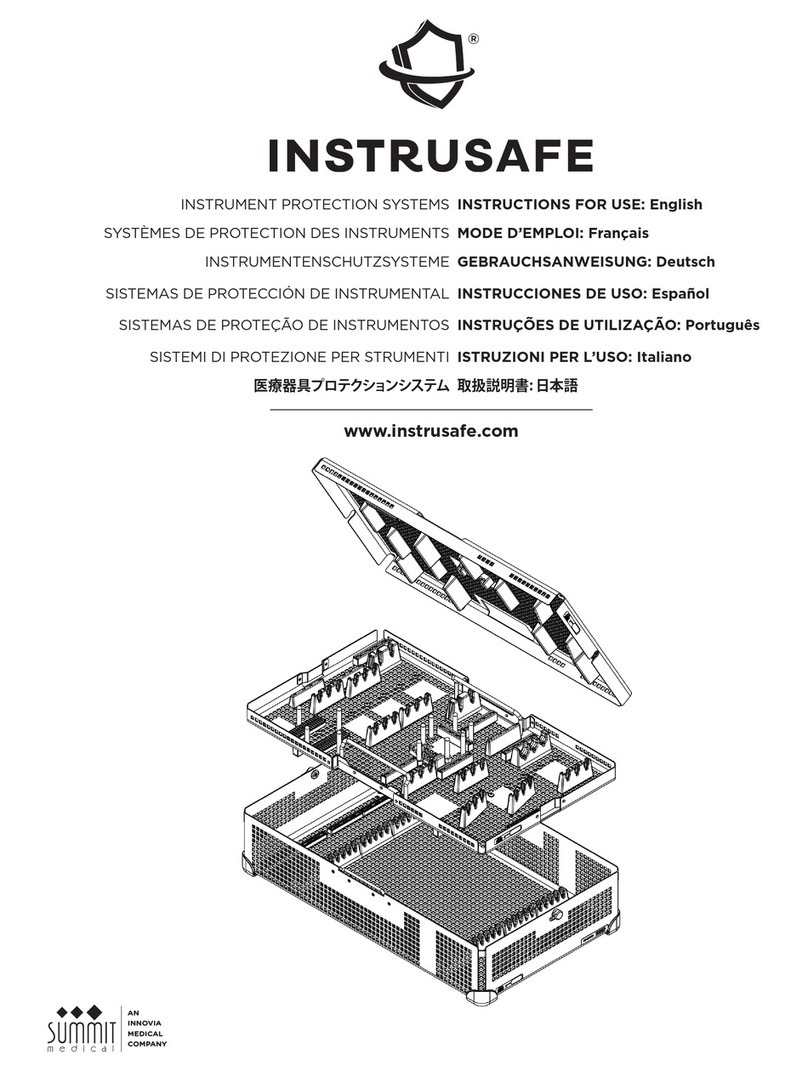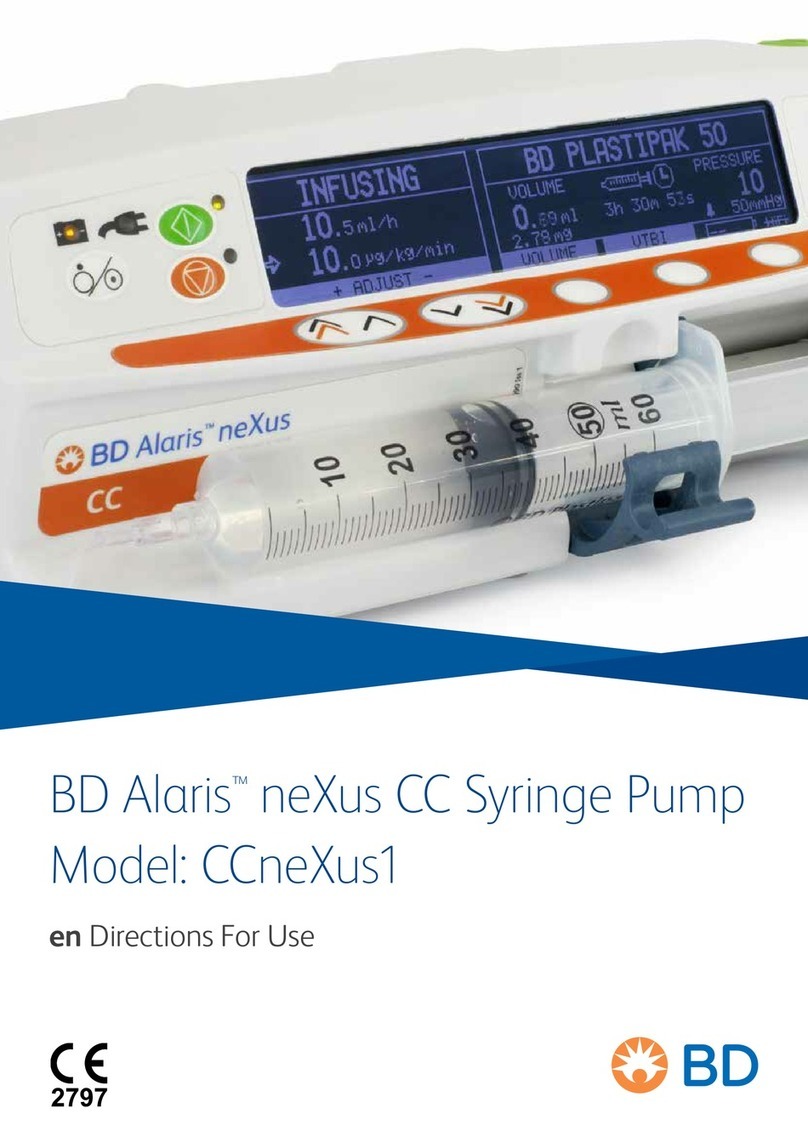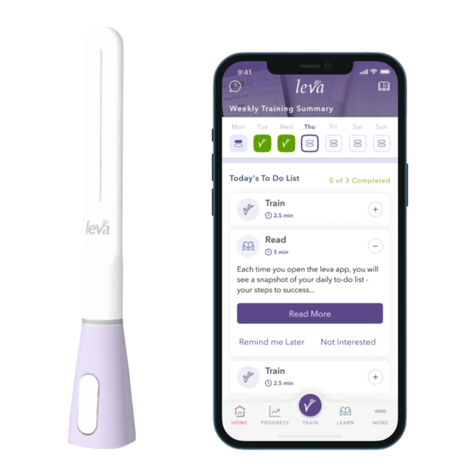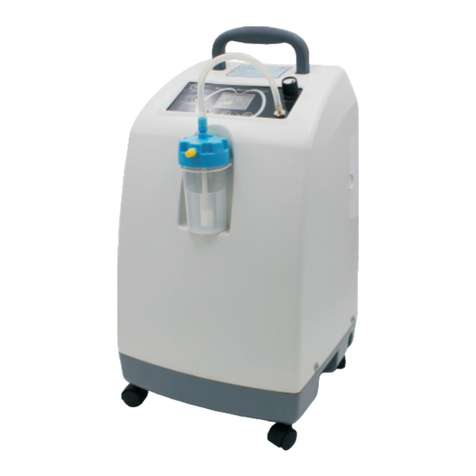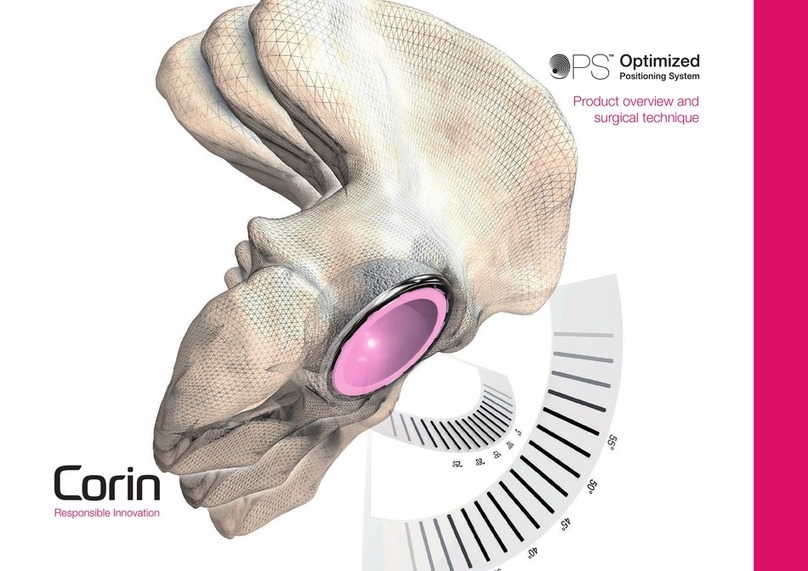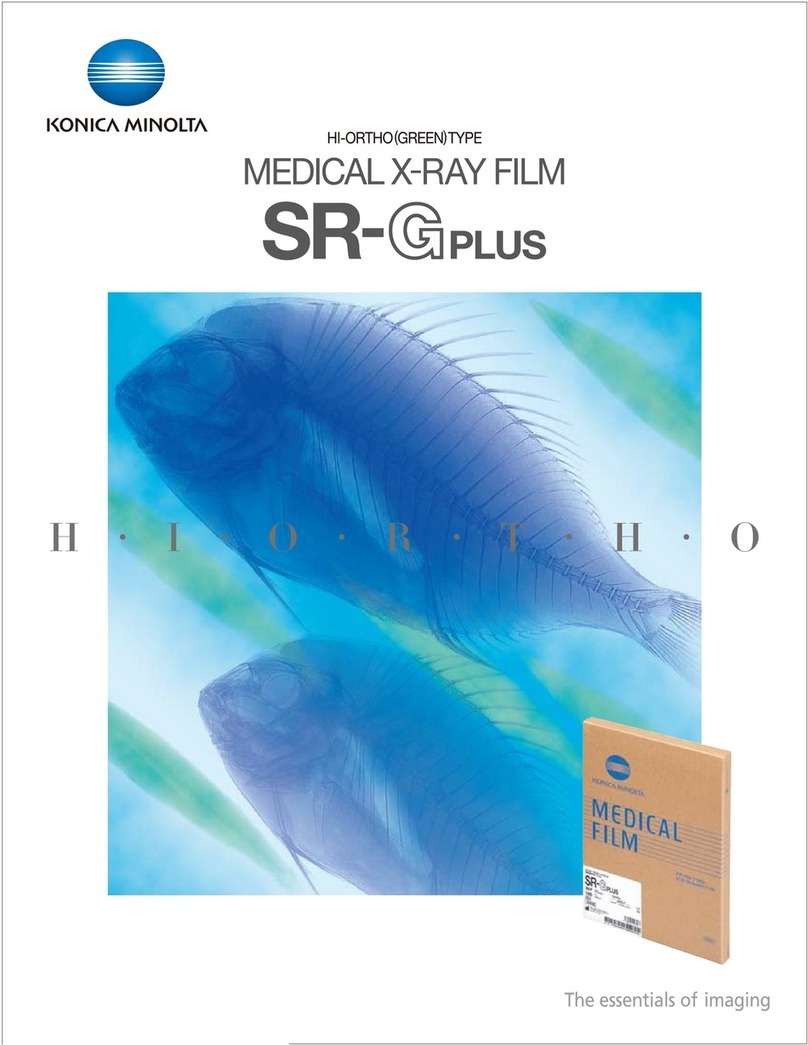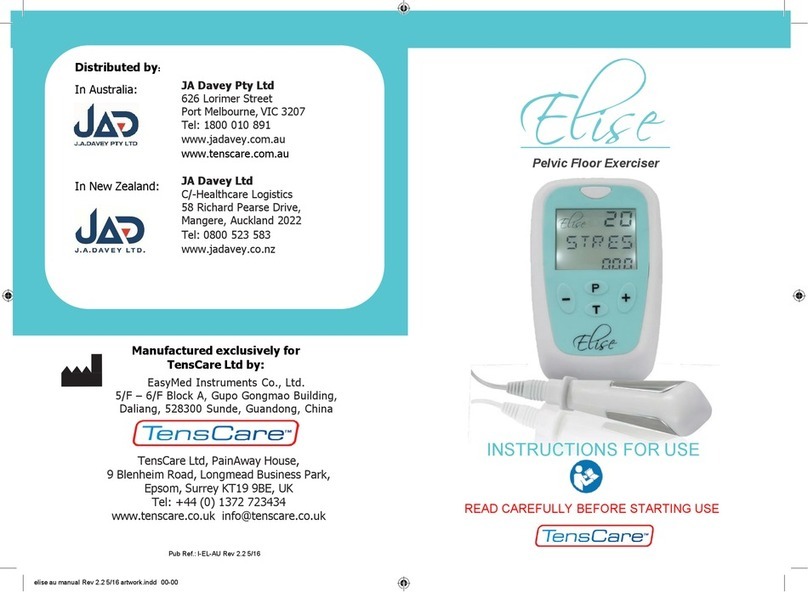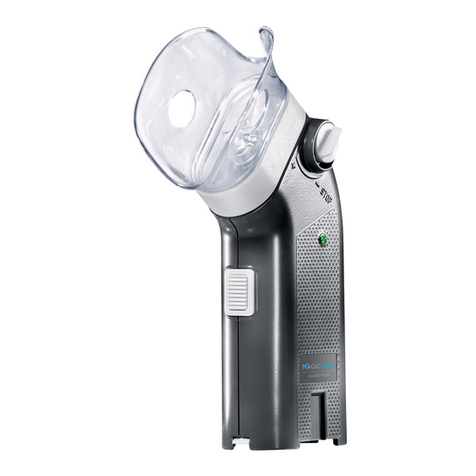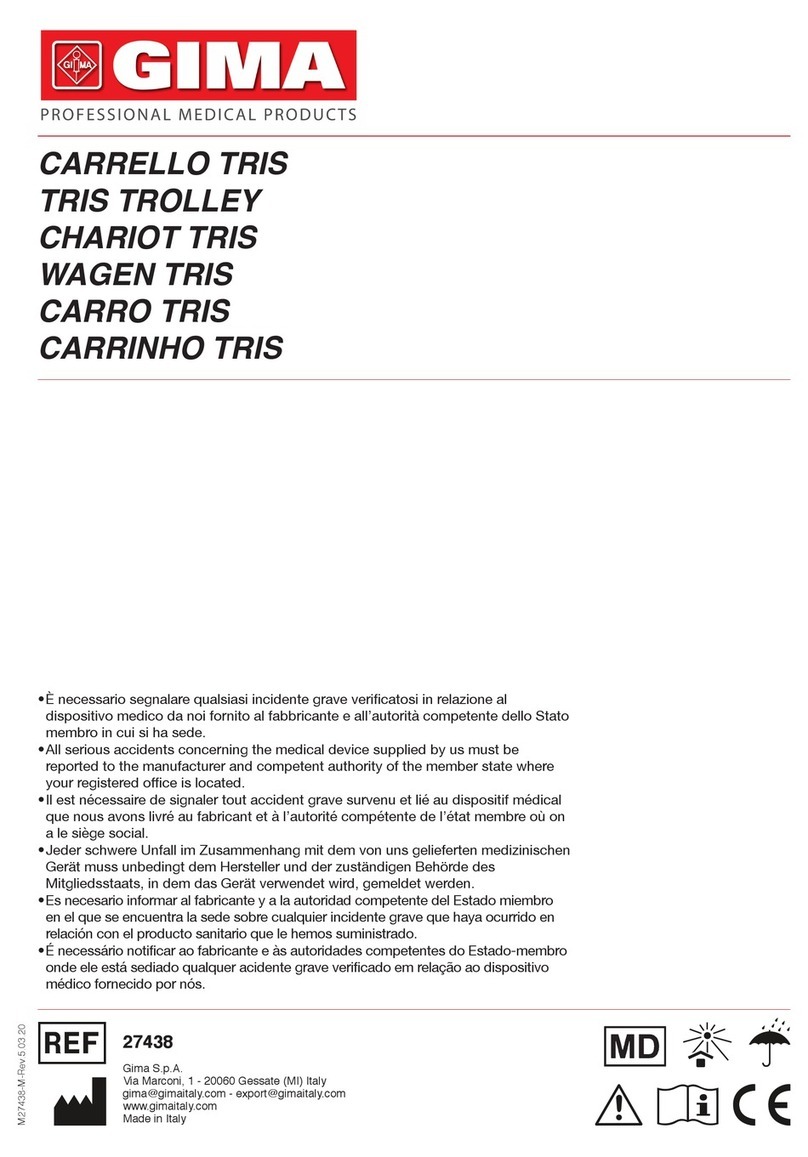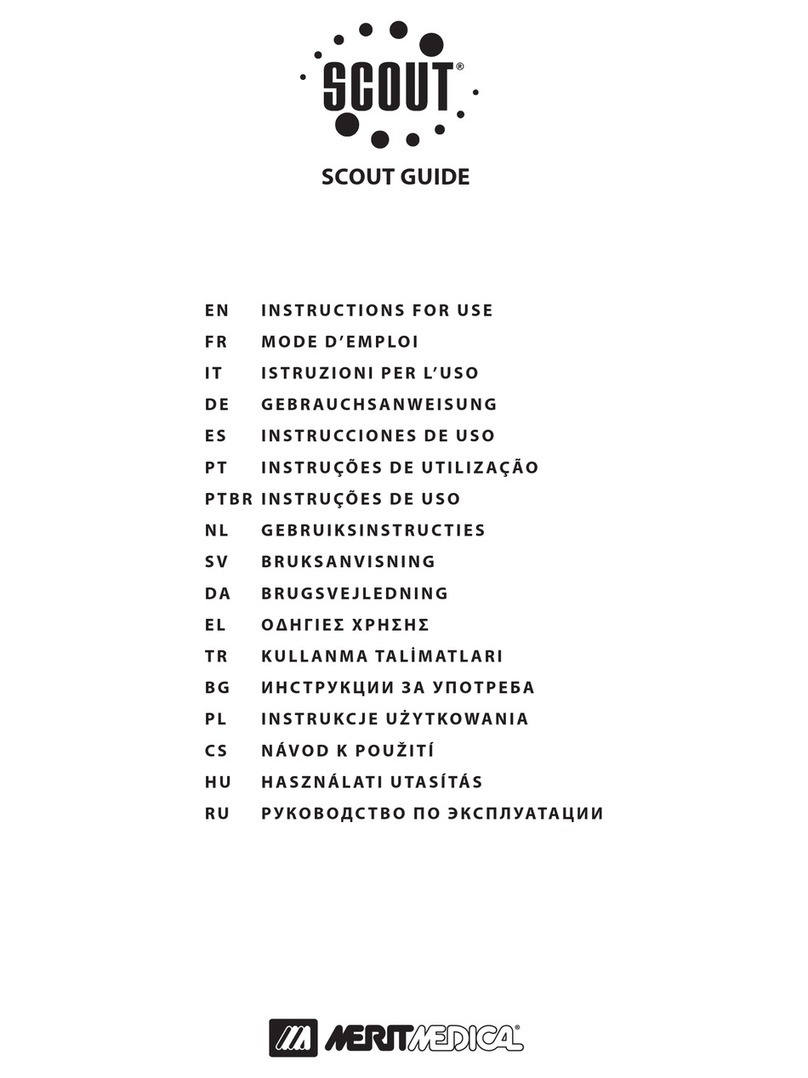embreis Very Good Knee - Go! User manual

VGK
very good knee
VG
VG
K
K
K
VGK
VG
VGK
VG
VGK
VG
Very Good Knee – Go!
The knee joint for transfemoral amputees
and knee disarticulation
Instructions Manual

1.1.
1.2.
1.3.
1.4.
1.5.
1.6.
1.7.
1.8.
1.9.
1.10.
1.11.
1.12.
1.13.
1.14.
1.15.
2.1.
2.2.
2.3.
2.4.
2.5.
3.
3.1.
3.2.
3.3.
3.3.1.
3.3.2.
3.4.
3.5.
3.6.
3.7.
4.
5.
6.
7.
8.
9.

Contents
Fluidic Control
Intended Purpose
Recommended User Profile
Normal Use
Non-Ordinary Use
Expectation Management
Extreme Device Settings
Extreme Temperatures
Prevention Of Overheating
Compatibility
Body weight and additional load
Wear And Tear
Dirt And Water
Stairs
Storage
Alignment
Socket Flexion
Foot Alignment
Kneeling
Swing Phase
Controls
Swing Release
Stance Mode Selector
Cycle Mode
Setting Cycling RPM
Clinical Set-Up
Stairs Mode
Ultra High Resistance Mode
Swing Phase
Terminal Impact Dampening
Declaration of Conformity
Warranty
Care And Maintenance Due
Liability
Storage
Ordering Numbers
1.1.
1.2.
1.3.
1.4.
1.5.
1.6.
1.7.
1.8.
1.9.
1.10.
1.11.
1.12.
1.13.
1.14.
1.15.
2.1.
2.2.
2.3.
2.4.
2.5.
3.
3.1.
3.2.
3.3.
3.3.1.
3.3.2.
3.4.
3.5.
3.6.
3.7.
4.
5.
6.
7.
8.
9.

1.1. Fluidic Control
The technology and means to adjust the valve
settings in accordance to user-demand, i.e. to
regulate the power that produces the desired
motion and functionality, and continuously
manages the flow and force levels inside the
joint using intuitive, fluid energised dynamic
valves, and uses negative feedback mechanisms
to stabilise movement.
1.2. Intended Purpose
The VGK-Go! is intended to be solely used in lower
extremity prosthetic limbs as a prosthetic knee
joint. The VGK-Go! Is best used for medium and
long femur length in the residual limb. For short
transfemoral the VGK-S is recommended. Please
see our website www.orthomobility.com.
1.3. Recommended User Profile
The joint is recommended for independent
prosthetic users, typically of mobility classes 1, 2, 3,
4**). The patient weight can be up to 125 Kg. (**)
Users with significant comorbidity must be carefully
monitored in the rehabilitation period to ascertain
the suitability of the device for their needs.
1.4. Normal Use
The VGK-Go! has been developed for ordinary
mobility use: walking, sitting, kneeling, cycling
and occasional wetting by rain or tap water. NOTE:
to set up the knee for cycling requires a special
procedure to be followed (2.1.7).
1.5. Non-ordinary And Extreme Use
Non-ordinary and extreme use may from time
to time be required and known prior to the
occasion. Such use may involve water and dirt,
or shock and forceful use. Whereas these may
be considered as part of intended use, it will be
required that written permission is sought from
the manufacturer so that such non-ordinary use
can be risk assessed, supported, or on grounds
of risk be denied. A considered permission/
denial/support programme will be discussed
on request. Use in Sauna is excluded. See also
note 7.
1.6. Expectation Management
Advise your patient that this device, whereas
designed to offer a service compatible with
a high level of safety, the same high level of
safety is liable to increase their expectations
of their ability, and consequently your patient
may ultimately find limits of performance of the
device.When such event happens, they are asked
to remember the circumstances and report any
event back to their CPO.

1
2
4
6
78
3
5
1
2
3
4
Heel rise limiter / knee exion limiter
Yield valve with scale
Stance mode selector
Swing control for tall people
5
6
7
8
Swing release dial
Cycle mode with safety catch
Ultra high resistance mode
Yield mode
Fig. 1: Adaptive Fluidic Control Knee.
1.8. Extreme Temperatures
Whereas the VGK-Go! has been designed for a
stable performance over a range of temperatures,
the use in very low temperatures (sub-zero) may
cause some stiffening in the yield action of the
joint, which in hands-free slope and stairs descent
could cause an imbalance. In such a case it is
advised to first try close to a handrail. In elevated
temperatures (40 degrees plus) the VGK-Go!
maintains its performance fairly well.
1.9. Prevention of Overheating
Do no use in the sauna. When used intensively,
allow heat to escape by avoiding use of cosmetic
foam covers.
1.10. Compatibility
The VGK-Go! has been designed to be compatible
with the full complement of prosthetic
components such as energy-storing feet, hydraulic
ankles, hip components, shock absorbers, etc.
1.7. Extreme Device Settings
Whereas the VGK-Go! permits a high level of
resistance in yield, this function is not intended
to effectively lock the joint at certain knee
angles over 30 degrees when significant weight
is placed upon the leg: the hydraulic pressures
could damage the device. This warning does not
apply to ordinary ‘leg over leg’ use.

1.11.Body weight and additional load
The VGK-Go! has been designed to allow for
patient body weight of 125 Kg and these persons,
at this maximum body weight, to carry not more
than 15 kg of additional load on a daily basis.
1.12. Wear and tear
As any mechanical device, mechanical wear and
tear will eventually occur, and the user and CPO
are required to see that regular inspections and
maintenance are carried out.
1.13. Dirt And Water
In the event of ingress of water and dirt, the joint
can be washed with water and if required soap.
Contact with salt water requires cleaning with tap
water. It is important to make sure that no sand
or stones are trapped between moving parts, as
this may lead to system damage. In case of use in
environments with loose particles, the use of a
protective (fabric) cover is recommended.
1.14. Stairs
The use of handrails or banisters is recommended
when descending downstairs.
1.15. Storage
The VGK-Go! must be stored in an extended
position
2. Alignment
The alignment of the joint follows the ideal of a
straight hip-knee-ankle line. The ‘Ankle’ refers to
where the natural ankle would be, that is between
1/4 and 1/3 of the foot length. If the residual limb
requires socket flexion, the hip-knee-ankle line
should be maintained as well as possible.

1
2
333
22
11
1Hip 23
Knee Ankle joint
Fig. 2: A vertical Hip-Knee-Ankle line is the preferred
alignment. A posteriorly placed hip/greater
trochanter is liable to make swing release
more difficult.
In case of a true flexion contracture, the flexion
must be accommodated from the hip, to
maintain hip-knee-ankle alignment. A heel strike
with a flexed knee must be avoided, to avoid a
‘double action’ in midstance. In case of such
problems, the following can be done: shift the
socket forward, shift the foot forward, the
user to exercise a small amount of hip extension
to maintain extension of the knee. The VGK-GO!
is ideally built in vertical position. The distal
pyramid must be used for neutral axial alignment
only if body weight > 100kg.
2.2. Socket flexion
Socket flexion produced from tilting the socket
at the distal socket only results in the knee
centre to be anterior to the hip-ankle line.
This may result in a diminished or absent knee
extension moment in late stance, and may make
swing initiation difficult.

Fig. 2 illustrates the preferred set up, irrespective
of any hip flexion accommodation.
2.3. Foot alignment
The VGK-Go! requires a toe load in late stance to
release into swing. Too much dorsiflexion may
cause insufficient forefoot loading and difficulty
in releasing the knee into swing. Equally, an
unusual high heel on the shoe would cause
difficulty in swing initiation.
2.4. Kneeling
Extreme or maximum knee flexion will cause
the socket to touch the hydraulic unit. This unit
can take the forces of kneeling and squatting
provided the contact is made in the region as
indicated in Fig. 3. It is important to measure the
indicated contact point to be 100 +/- 5 mm from
the knee axle. If required, the socket may need
a local build up, so that the internal structure of
the hydraulic takes the load at the correct point.
DO adhere to this rule. Alternatively, the socket
may rest on the hydraulic valve housing.
2.5. Swing Phase
It must kept in mind that the mass of the knee
device helps the bilateral balance of body mass,
but requires a correct mediolateral placement
for optimum performance. As a possible guide
for bench alignment, the VGK-Go! should be
located in the plane of action as defined by
the biological ball and socket hip joint, and
the push-point of the distal femur. In shorter
residual limbs more lateral placement of the
VGK-Go! is expected, or a VGK-S (different
product) should be considered.
Fig. 3: Kneeling onto the cylinder is permissible when the
contact point is +-100mm from the axis.

3. Controls
3.1. Swing release
The VGK-Go! relies on the presence of knee
extension and toe-load for swing phase release.
This condition is natural in terminal stance. For
most users this switching behaviour is set to be
as light as possible. For bilateral amputees the
transition may need to be more deliberate also
to secure standing balance. If the threshold for
switching to swing mode must be increased, the
adjuster as in Fig. 4 must be turned clockwise.
This increases the preload on the Polyurethane
spring, requiring more weight on the forefoot
before the Polyurethane spring gets further
compressed due to the swivelling action of the
distal knee, which supports swing release. When
used outside the parallel bars, no slack rocking
action may be present between the frame and
the distal knee. A stiffer (red) spring can be
ordered in case the tension needs to be higher.
Forceful hyperextension as in hitting the ground
hard with forceful hip extension immediately
followed by a knee flexion moment may bring
the knee into swing mode with consequential
loss of weightbearing capacity. An example of
such non-recommended use is attempting to
land hard on the mid-foot onto a curb or step.
Remember that the joint will release into swing
mode when the knee centre is in a state of hyper
extension and simultaneously the mid- and
forefoot is loaded, followed by a knee flexion
moment. This user induced fail-mode is unlikely
to happen in ordinary walking, but can happen
in exceptional circumstances. Confidence in the
VGK-Go! should not be lost if the usual behaviour
continues after such an incident or event of
exceptional use.
3.2. Stance Mode Selector
See Fig. 5 (4). There are three options: (5) High
resistance mode (indicated by a ‘padlock’
symbol) (and therefore is NOT A FULL LOCK but
a useful addition to the range of options), the
normal walk mode (7) option for use with stairs
(indicated by the ‘stairs’ symbol), and the cycle
mode (6) (indicated by a‘pushbike symbol’).
3.3. Cycle Mode
Whereas the VGK-Go! can be used for cycling,
this can be accomplished in two fashions. For
the shorter rides, the user may not use the
cycling switch and move through the yield
resistance. For longer rides the manual cycling
may be selected. This renders the VGK-Go!
free as long as the knee angle speed does not
exceed the pre-set safety value, the safety valve
will aid in reducing risk of collapse. A feeling of

uncomfortable slackness in the joint in this use
mode is normal, and the user is reminded to
switch the normal walking mode.
3.3.1. Setting Cycling RPM
The factory setting of the cycling function is
on ultra-safe! In this factory setting the cycling
function may not work for the user. To get
started, put the Cycle RPM switch to off. In the
centre of the cycling switch there is a small
screw (see Fig. 5) that sets the permissible rate of
knee flexion before the safety valve is activated.
Bench-test the prosthesis: it does not bend easy.
Put the cycle switch to FREE, test the knee, it
does not bend easy. Put the cycle switch to OFF,
turn the RPM screw in fully. Put the cycle switch
to FREE, test the knee, it bends very easy. Bend
the knee fast, it still bends easy. Wind the RPM
screw anticlockwise for two full turns, test the
knee in bending slowly and fast. If no difference,
repeat procedure. A setting will be found where
slow movement is easy, and fast movement is
prevented after a little slack movement. This
is the basis for the VGK-Go! to differentiate
between the slow cycling movement that is to
be permitted, and the fast movement that may
occur in an otherwise uncontrolled collapse of
the joint if it were left in the FREE cycling mode.
3.3.2. clinical set-up
For clinical set-up, put the RPM switch to OFF,
turn the RPM screw fully in. The user cycles, and
incrementally the RPM screw is turned anti-
1
2
2Safer
!
Do not
1
Easier to release
!
Avoid
Fig. 4: Swing release dial

clockwise until the safety feature applies itself
during cycling. Agree with the user how much
less sensitive they need the safety feature to
remain safe in walking if they attempt a simulated
collapse. Naturally, the faster cycling is required,
the less safety is available in walking!
3.4. Stairs Mode
The ‘yield’ function refers to the joint flexion
behaviour under load of body weight such as
occurs in downstairs walking. The factory default
setting provides too much resistance to the
experienced user, yet provides a safe resistance
for the first time user. The yield is adjusted as
per fig 5. A clockwise turn of one dot provides
a stepped increase in yield resistance, and vice
versa. To get the right setting for the user, allow
them to descend down from the last step of
a stair and adjust until comfortable. Adjust as
required when more steps are taken in sequence.
Safer
1
2
3
Yield valve
Swing release dial for tall people
Safety catch sensitivity
4
5
6
7
Stance mode selector
Ultra high resistance mode
Cycle mode with safety catch
Yield mode for slope and stair descent
1
2
4
6
7
3
5
3.5. Ultra High Resistance Mode
Ultra high resistance mode, for ease of
reference indicated by a ‘padlock’ is an ultra
high resistance mode effectively blocking the
yielding, but allowing free swing as long as the
walking speed is not too high. For this reason
this mode is NOT A FULL LOCK. The ultra high
resistance mode is activated by placing the
lever in the mid position.
3.6. Swing Phase
The swing phase is controlled by the Maximum
Fig. 5: Dynamic Adjustments

Knee Angle Slider (see also Fig. 6), and the
Swing button (see also Fig. 5). The swing phase
resistance is divided in two parts. From 0 to 40
degrees (approx.), the Swing Dial gives more
resistance to this initial swing phase, and is used
when there is insufficient forward drive of the
shin and the patient is still ‘waiting’ for the leg to
come forward after adjustment of the Maximum
Knee Angle Slider. (When shank length causes
long pendulum effect). Clockwise turning
increases the resistance, and vice versa. Normally
the swing button is set to light resistance to
minimise the work necessary by the user (i.e.
as fully open as possible). The MAIN control is
the Maximum Knee Angle Slider. Maximum
Knee flexion, is achieved by setting the lever
as indicated in Fig. 6. A leftward swivelling
movement limits maximum knee flexion and
increases the ‘power’ of the knee joint to push
the foot forward. A rightward move increases
the maximum heel rise and lowers the ‘power’
delivered to the foot.
3.7. Terminal Impact Dampening
The terminal impact dampening is auto-
corrective and dynamically adjusts itself to the
walking speed, and is not otherwise adjustable.
NOTE: there is no external adjustment to alter
the extension resistance.
4. Declaration of Conformity
The VGK-Go! and its variations made by
Orthomobility Ltd, Reg 5143375 conform to the
Medical Device Regulation 2017/745 and 93/42/
EEC and ISO 10328:2016
5. Warranty
Orthomobility Ltd. offers a time limited warranty
against defects in materials and workmanship in
accordance with terms and conditions of sale.
Fig. 6: Adjustment for dynamic swing phase
and heel Rise Slider
1
+
–
1
Heel rise slider

Defects arising from non-ordinary and extreme
use, and fair wear and tear are subject to the
manufacturer’s discretion. REGULAR / PLANNED
WET ENVIRONMENT USE requires manufacturer’s
AGREEMENT. As the use of a prosthetic device
includes a necessary risk, the manufacturer limits
the liability arising from the use of the VGK to
that liability directly arising from a malfunction
of the device due to faulty materials and/or
workmanship and exclude any other special,
incidental or consequential damages. For full
details see Terms and Conditions on invoice.
6. Care And Maintenance
Due to fair wear and tear, the solid bearings may
show wear and may need replacing from time to
time. Please refer to www.orthomobility.com for
more specific maintenance instructions.
7. Liability
As the use of a prosthetic device includes a
necessary risk, the manufacturer limits the
liability arising from the use of the VGK-Go! to
that liability directly arising from a malfunction
of the device due to faulty materials and/or
workmanship and exclude any other special,
incidental or consequential damages. For full
details see Terms and Conditions on invoice.
8. Storage
The VGK and its variations must be stored, and
shipped in an extended position to preserve
internal function of the joint.
9. Ordering Numbers
VGK125P VGK-Go! Knee joint 125kg, with standard pyramid
VGK125A VGK-Go! Knee joint 125kg, withTK Anchor adapter
VGK125M VGK-Go! Knee joint 125kg, with M36 threaded head
For extended information visit:
www.orthomobility.com

absolutely
independent
• uid-controlled stance phase security
• active swing phase control
• stumble recovery
• security mode
• cycling mode
• water resistant
• 175° knee angle
• no charging
• activity classes 1+ up to 4

absolutely
independent
• uid-controlled stance phase security
• active swing phase control
• stumble recovery
• security mode
• cycling mode
• water resistant
• 175° knee angle
• no charging
• activity classes 1+ up to 4

Orthomobility Ltd.
Culham Science Centre
Abingdon OX14 3DB
Oxfordshire
United Kingdom
Tel: +44 (0) 1865 407248
Email: contact@orthomobility.com
www.orthomobility.com
Culham Science Centre
Tel: +44 (0) 1865 407248
VGK
very good knee
Table of contents
Other embreis Medical Equipment manuals
Popular Medical Equipment manuals by other brands
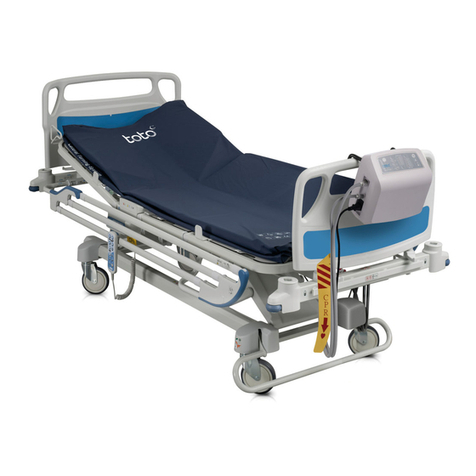
Frontiermedical
Frontiermedical toto Service, Maintenance and Repair Manual

Stryker
Stryker 738 Operation manual
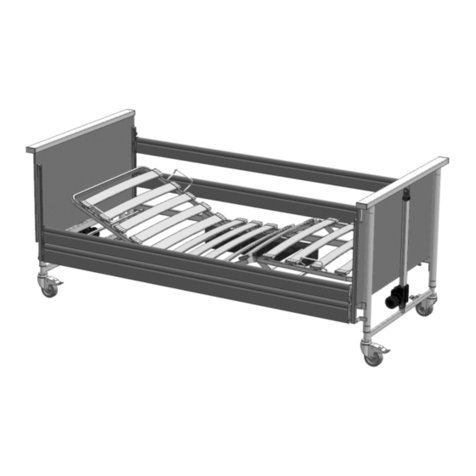
BOCK
BOCK Nursing domiflex 3 Assembly and operating instructions
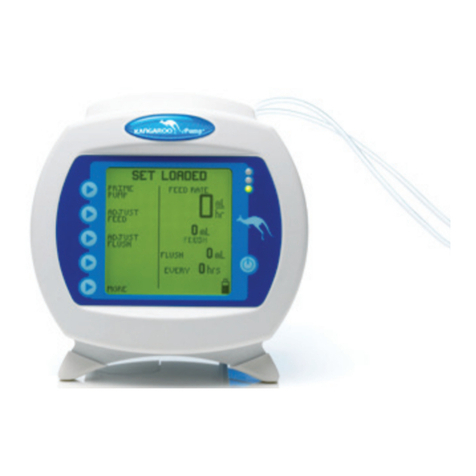
Cardinal Health
Cardinal Health Kangaroo ePump user guide

Sanyo
Sanyo MLS-3780 Usage instructions
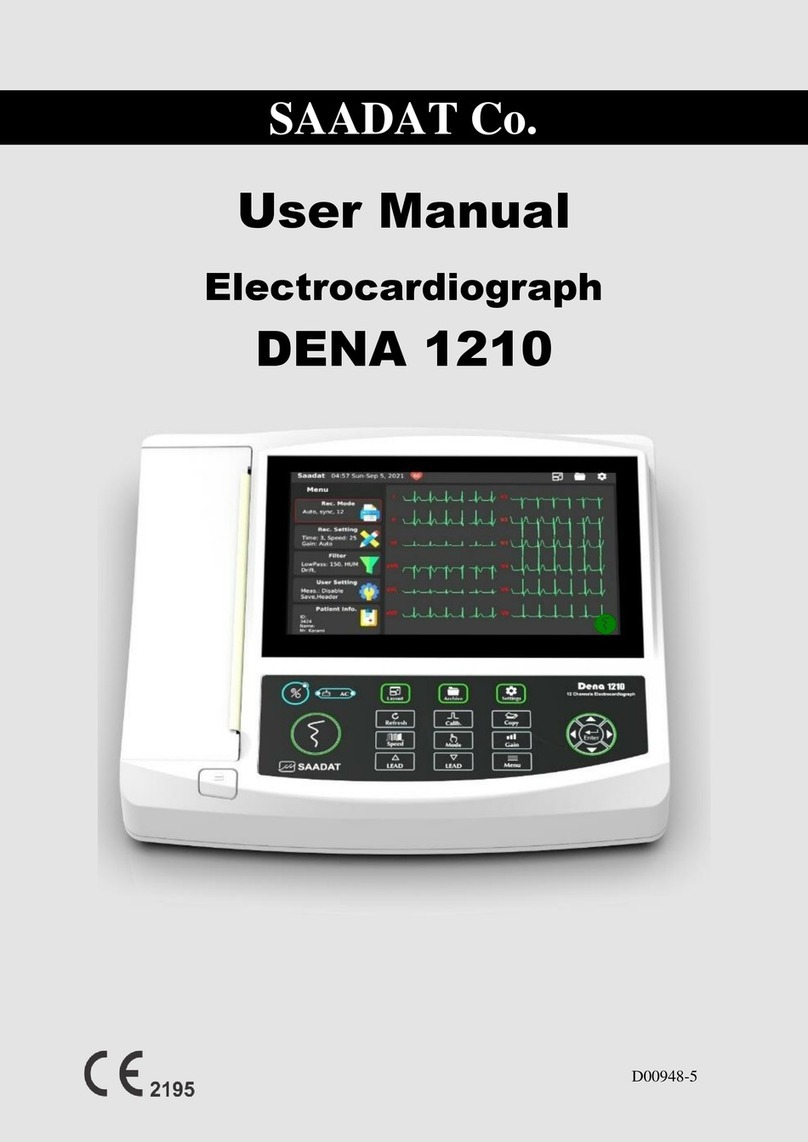
Saadat
Saadat Dena 1210 user manual
